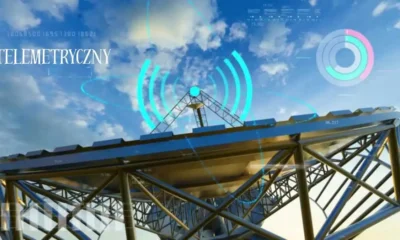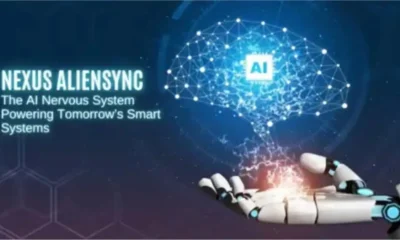TECHNOLOGY
FREHF: Future Ready Enhanced Human Framework

Future Ready Enhanced Human Framework (FREHF) is an integrative approach that merges technology and human behavior into a seamless collaborative experience. At its essence, FREHF is designed to enhance communication, reduce cognitive load, and improve team performance through intelligent systems that can perceive and adapt to human inputs beyond just language and commands.
The approach leverages real-time data analysis, machine learning algorithms, affective computing, and neurocognitive modeling to monitor subtle human cues, like tone, facial expressions, posture, and decision-making patterns. These insights are used to adjust the behavior of AI-driven systems, allowing them to act as proactive, emotionally aware partners rather than passive tools.
Real-Time Responsiveness: A Game Changer
The difference between a standard collaborative system and FREHF is that it makes decisions on human states in real time. An example in a virtual classroom: assuming that a student displays emotional indicators of frustration or disengagement, i.e. tense face, refusal to participate, or irregular input patterns, the FREHF system will find a way to intercept such cues and change the training technique. It can either reduce the contents, provide reassurance, or activate a live human intervention.
Building Blocks of FREHF
1. Adaptive Artificial Intelligence
FREHF systems utilize dynamic AI models capable of learning from user interactions and refining their responses. These AI components are not static but evolve continuously to match the behavioral patterns, emotional states, and cognitive preferences of users.
2. Cognitive Science Integration
Cognitive science provides FREHF with the theoretical grounding to understand how humans think, learn, remember, and respond under various conditions. By embedding cognitive models into AI systems, it can align technological responses with human psychological states.
3. Human-Centered Design
The user is at the core of the FREHF design philosophy. Human-centered design ensures that every technological interface is built with usability, empathy, and adaptability in mind. This allows systems to support users intuitively, with minimal disruption or learning curve.

Applications
1. Education
In a digital learning setup, it can offer differentiated content delivery according to the emotions as well as the learning styles of students. When a learner is overwhelmed, the system may reduce the pace or may go ahead to show the contents in another form. In the process, FREHF helps with individual, caring training, which promotes retention and motivation.
2. Telehealth
Empathy and real-time awareness are important in virtual healthcare. It helps to find out whether patients are anxious or confused about something so that practitioners can reassure them by adjusting their tones or providing additional details. This would facilitate a trust relationship between provider and patient, which is usually undermined during remote consultations.
3. Working and cooperation at a distance
FREHF systems that can identify emotional tension, cognitive overload, or disengagement are extremely useful in virtual teams. These developments may trigger changes in workflow, introduce restorative breaks, or mediate, which will promote psychological safety and enduring productivity in remote workforces.
4. Virtual and Augmented Secrets
It immerses their use further with emotion sensitivity in VR/AR. An example of this kind is a training VR simulation that can adjust difficulty to the level of a trainee who is under too much stress or even present them with some messages to stimulate them and keep the training interesting. This flexibility enhances more realistic and supportive interactive digital experiences.
Benefits
- Enhanced Communication: FREHF systems enhance communications by interpreting verbal and nonverbal constraints, thereby minimizing misunderstandings and achieving more substantial communication.
- Less mental stress: Conversational interfaces, intelligent task assignment will reduce mental burden, eliminating the risk of decision burnout and burnout.
- Heightened Engagement: Emotionally sensitive systems develop a personal and respectful experience, motivating users and making them stick around.
- Improved Performance: Teams using FREHF tools are more coordinated, quicker at problem solving, and more efficient.
- Scalability and Customization: FREHF frameworks can be adapted to particular industries and expanded on any platform.
Real-Time Emotional and Cognitive Responsiveness
However, it can analyze and respond to real-time emotional and cognitive feedback, which makes it the worthiest differentiator of all from conventional systems. FREHF platforms can be used to tell when a person is feeling stressed, tired, lost, engaged, or annoyed through sensors, wearable technologies, and affective computing algorithms.
Just consider the case when the remote learning platform figures out that a student is confused and changes the way the lesson is delivered. Or imagine a medical platform that reacts to patient anxiety, and tones down the doctor in the tone and the way he communicates with the patient. These are not just science-fiction dreams but are reality on the way, facilitated by FREHF technology.
Ethical Design and Privacy Considerations
Ethical design as well as privacy protection must be of primary importance to FREHF systems as they involve the interpretation and collection of sensitive behavioral and emotional data. Developers will be required to implement high data protection levels, allow transparency in decisions made by AI, and control the content of information to the user.
Conclusion
The Future Ready Enhanced Human Framework (FREHF) is not only about a technological roadmap. It is an expectation that collaboration between human emotional intelligence as well as artificial computational power can no longer be separate. FREHF is using adaptive AI, cognitive knowledge, and a human-centered approach to turn digital interactions into insightful experiences.
-

 BIOGRAPHY7 months ago
BIOGRAPHY7 months agoBehind the Scenes with Sandra Orlow: An Exclusive Interview
-

 HOME1 year ago
HOME1 year agoDiscovering Insights: A Deep Dive into the //vital-mag.net blog
-

 HOME1 year ago
HOME1 year agoSifangds in Action: Real-Life Applications and Success Stories
-

 BIOGRAPHY1 year ago
BIOGRAPHY1 year agoThe Woman Behind the Comedian: Meet Andrew Santino Wife




























